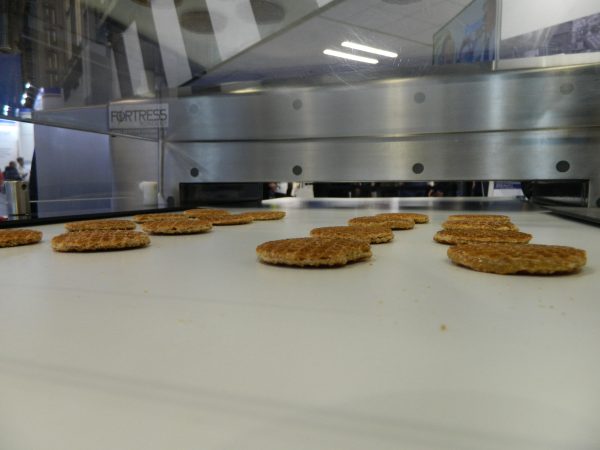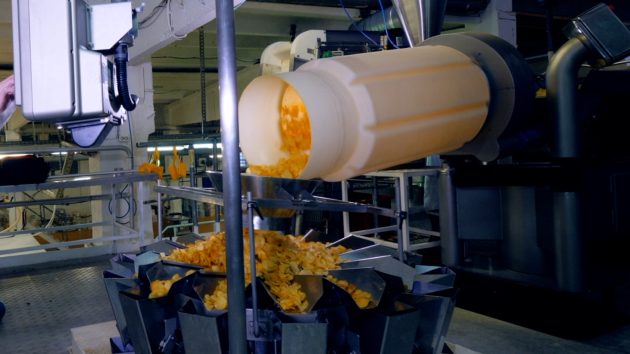
Safety gets smarter
By Eric Garr
equipment Food contaminants food safety Fortress Tech Inspection equipmentInspecting the new era of food safety
 Some food firms are turning to advanced systems that offer multi-orientation, multi-scan detection. Photos courtesy Fortress Technology
Some food firms are turning to advanced systems that offer multi-orientation, multi-scan detection. Photos courtesy Fortress Technology Driven by ever-stricter safety regulations and the need for traceability across the supply chain, food manufacturers are turning to inspection solutions with improved precision and greater digital capabilities.
Beyond identifying contaminants, smarter technology is being used within or alongside inspection systems to improve efficiency, compliance and, ultimately, profitability. Traceability is, and will continue to be, a key priority for the industry.
Digital testing
The speed at which a food company can publicly pinpoint the source of a contaminant is imperative, as it can minimize the damage caused by a recall. While inspection systems, such as metal detectors and x-rays, are an integral first step in quality control, proper management with regular testing is vital to ensure optimum protection.
Automatic digital testing software is starting to gain industry acceptance. This technology is designed to complement manual processes, allowing for tests and records to be activated automatically and even remotely, if required.
Leveraging digital concepts for this critical step in food safety compliance provides manufacturers with a true measure of how each inspection machine is performing. Testing interoperability not only removes the risk of human error, but also reduces labour costs and safety hazards associated with manual checks, in addition to providing an audit trail for traceability purposes.
From paper fail to digital trail
The next step in food safety involves the elevation of systems running on paper. Paper-based record-keeping hinders traceability required to better understand and respond to the increasingly complex supply chain in the event of unprecedented circumstances. Digital tools are helping to address these issues, allowing manufacturers and retailers to remove potentially unsafe products from the market more quickly and review the root cause for preventative measures.
Advanced new systems with data collection and paperless test routines will become more prevalent. For example, manufacturers might opt for a combination metal detector and checkweigher capable of pre-configuring every test by retailer code of practice and product being inspected. Integrated sensors can confirm when a check has been conducted, generating a dated digital due diligence report that is signed by the operative on the screen for full transparency.
Built-in data capture with remote access means quality assurance managers can troubleshoot and generate reports from their phone, laptop, or tablet, with the test parameters and machinery functionality all in one place.

Digital test technology can be fitted to bulk, gravity, pipeline, and conveyor style metal detectors.
The future of metal detection tech
As much as food manufacturers must adopt inspection equipment with improved sensitivity levels, an equally important criterion is to eliminate false rejects.
Identifying metal within conductive products can involve changing the frequency to minimize the effect. However, this can have a devastating impact on the accuracy of a detector, as operators might lower the sensitivity to the point where contaminants pass through.
To overcome this issue, some food firms are turning to systems offering multi-orientation, multi-scan detection. Compared to the traditional single or dual frequency food metal detectors, this new methodology uses multiple coil sets to drive the electromagnetic fields in different directions. Rather than missing a metal contaminant because it hasn’t aligned with a specific field, it looks for signals over a broad spectrum, from various angles. The stronger disturbance from one field compensates for a weaker signal from another. In essence, it’s like running numerous systems all at once.
This newest approach to metal detection addresses previous limitations. Notably, orientation effect and identifying flat metal contaminants in product with a low side profile. Alongside eliminating the risk of false rejects and ensuring high sensitivity, in-built automatic product tracking and data capture software will further increase transparency and traceability.
X-ray or metal detection
When it comes to adopting smart technologies, it is unwise to compare metal detection and x-rays. Metal detectors can identify all types of metals, while x-ray machines are worth investing in if there is a contamination risk of other foreign materials.
Factory layouts and the placement of inspection machinery is another important consideration. When working together, an x-ray system will favour an in-line position, whereas metal detectors are better located toward the end of the processing line, often after packaging.
X-rays and metal detectors are complementary technologies. The same can be said for advanced inspection systems. Smart technology must be implemented alongside more effective and modern approaches to preventative measures and safety strategies.
Eric Garr is regional sales manager, Fortress Technology.
This article was originally published in the February/March 2022 issue of Food in Canada.
Print this page